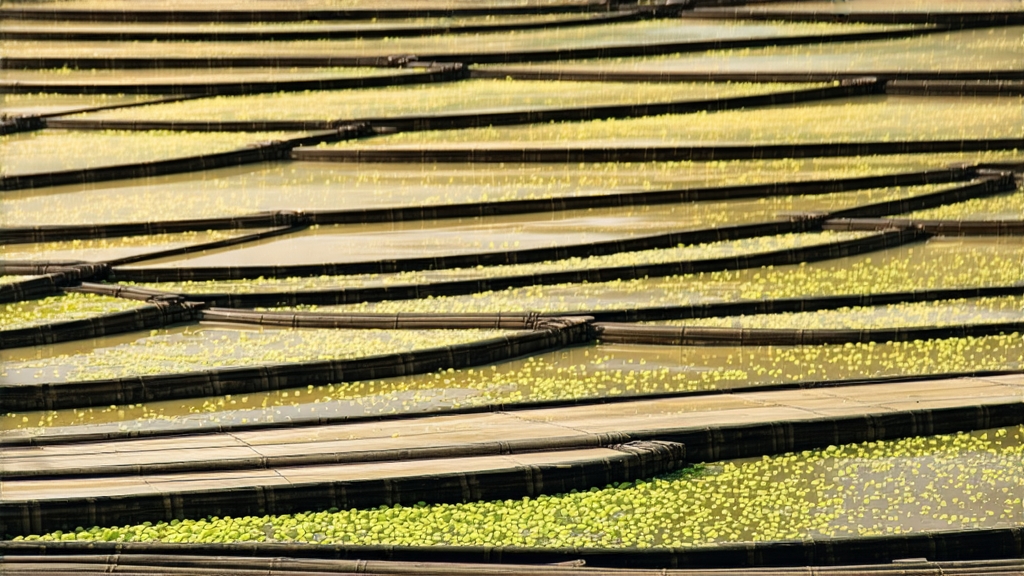
Meng Ding Huang Ya, literally “Yellow Bud from the Summit of Meng,” is the least-traveled jewel of China’s six major tea families. While green, black and oolong have conquered foreign shelves, this yellow tea has quietly survived for twelve centuries on the mist-capped ridges of Mt. Meng, a spur of the Tibetan Plateau that pushes its granite shoulders into the humid Sichuan Basin. To understand why emperors once sealed it in wax and why modern connoisseurs call it “liquid ivory,” one must follow the bud from myth to mouth, from Tang-dynasty stone inscriptions to the bamboo-lined curing huts that still perfume the air with warm maize and orchid.
History: a tribute carried by shoulder poles
The first written record appears in 808 CE, when the Tang governor of Yazhou presented “mengding shizhong” (tea picked at the stone bell shrine) to the throne. By the Song dynasty the annual tribute weighed only 365 buds—one for each day of the year—wrapped in silk and escorted by armed runners to Chang’an. The Qing Kangxi Emperor so prized the tea that he exempted the monks of Mengding Monastery from land tax in exchange for 22 liang of perfect buds every spring. Caravans then carried it south to Lhasa where Tibetan nobles traded horses for a single brick. When the empire collapsed the tea almost vanished; the 1950 census listed only six families who still knew the secret “menhuang” (sealed yellowing) step. A state-sponsored revival in 1979 replanted heirloom shrubs from ancient clumps, and today 180 hectares of certified gardens cling to slopes between 800 m and 1400 m, shrouded in 280 foggy days a year.
Micro-terroir: where Sichuan humidity meets plateau chill
Mt. Meng traps monsoon clouds against cold upland air, creating a 75 % average humidity and a diurnal swing of 10 °C even in April. The soil is a crumbly quartz-rich yellow loam, acidic (pH 4.9) and laced with manganese and zinc washed down from Jurassic sandstone. Such chemistry forces the tea bush to slow growth, thickening cell walls and concentrating theanine. Local growers insist that the mountain’s perennial cloud filters sunlight into a soft, diffused glow that reduces catechins and astringency, giving the finished tea its hallmark sweetness.
Cultivar and picking code
Only two clones are permitted: the traditional “Mengding zao” (early) and the newly selected “Mengding huang” (yellow), both descendants of the wild large-leaf tea trees first catalogued by Benedictine monk Père David in 1869. Picking begins when five consecutive days remain above 12 °C but night temperatures still drop below 8 °C, usually between 20 March and 5 April. Workers pluck the unopened “single bud with initial scale,” meaning the tiny fish-leaf must still hug the bud like a closed fan. One kilogram of dry tea demands 42 000 such buds, enough to fill two bushel baskets carried on a porter’s bamboo yoke.
Craft: the invisible 48-hour suffocation
Yellow tea’s soul lies in the “menhuang” (sealed yellowing), a step that sits between green tea’s kill-green and white tea’s withering. Within two hours of plucking the buds are spread on bamboo trays inside a pine-fired warming room kept at 28 °C and 85 % humidity. For the next 45 minutes they are hand-tossed every three minutes to bruise epidermal cells just enough to rupture 12–15 % of the vacuoles. When the leaf edge feels tacky, workers pile the buds 8 cm deep inside linen sacks that are slid into a cedar box lined with wet rice paper. The box is closed but not airtight; respiration raises the internal temperature to 34 °C while polyphenol oxidase and peroxidase dance in the dark, converting chlorophyll into pheophytin and catechins into theaflavins. After 24 hours the pile is turned, misted with mountain spring water, and sealed again. The moment the leaf turns a uniform pale primrose—never ochre or olive—the master lifts a handful to his ear and shakes it; a faint rustle like silk means the yellowing is complete.